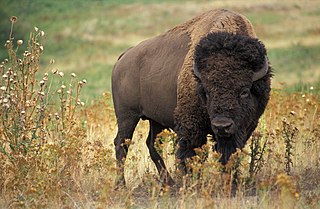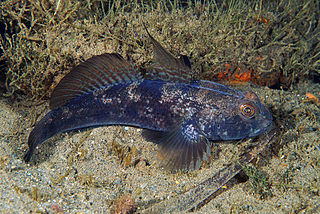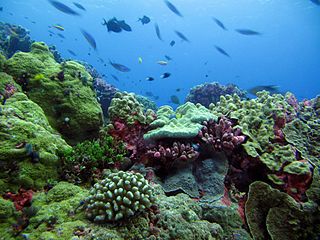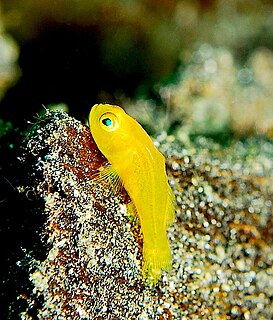
Bison are large, even-toed ungulates in the genus Bison within the subfamily Bovinae.

Crocodiles or true crocodiles are large semiaquatic reptiles that live throughout the tropics in Africa, Asia, the Americas and Australia. Crocodylinae, all of whose members are considered true crocodiles, is classified as a biological subfamily. A broader sense of the term crocodile, Crocodylidae, is not used in this article. The term crocodile here applies to only the species within the subfamily of Crocodylinae. The term is sometimes used even more loosely to include all extant members of the order Crocodilia, which includes the alligators and caimans, the gharial and false gharial, and all other living and fossil Crocodylomorpha.

Jellyfish and sea jellies are the informal common names given to the medusa-phase of certain gelatinous members of the subphylum Medusozoa, a major part of the phylum Cnidaria. Jellyfish are mainly free-swimming marine animals with umbrella-shaped bells and trailing tentacles, although a few are anchored to the seabed by stalks rather than being mobile. The bell can pulsate to provide propulsion for highly efficient locomotion. The tentacles are armed with stinging cells and may be used to capture prey and defend against predators. Jellyfish have a complex life cycle; the medusa is normally the sexual phase, which produces planula larva that disperse widely and enter a sedentary polyp phase before reaching sexual maturity.

Starfish or sea stars are star-shaped echinoderms belonging to the class Asteroidea. Common usage frequently finds these names being also applied to ophiuroids, which are correctly referred to as brittle stars or basket stars. Starfish are also known as Asteroids due to being in the class Asteroidea. About 1,500 species of starfish occur on the seabed in all the world's oceans, from the tropics to frigid polar waters. They are found from the intertidal zone down to abyssal depths, 6,000 m (20,000 ft) below the surface.

Gobiidae is a family of bony fish in the order Gobiiformes, one of the largest fish families comprising more than 2,000 species in more than 200 genera, sometimes referred to as the "true gobies". Most of them are relatively small, typically less than 10 cm (3.9 in) in length. The Gobiidae includes some of the smallest vertebrates in the world, such as Trimmatom nanus and Pandaka pygmaea, Trimmatom nanus are under 1 cm long when fully grown, then Pandaka pygmaea standard length are 9mm (0.35 in),maximum known standard length are 11 mm (0.43 in). Some large gobies can reach over 30 cm (0.98 ft) in length, but that is exceptional. Generally, they are benthic, or bottom-dwellers. Although few are important as food for humans, they are of great significance as prey species for commercially important fish such as cod, haddock, sea bass, and flatfish. Several gobiids are also of interest as aquarium fish, such as the dartfish of the genus Ptereleotris. Phylogenetic relationships of gobiids have been studied using molecular data.

A heath is a shrubland habitat found mainly on free-draining infertile, acidic soils and characterised by open, low-growing woody vegetation. Moorland is generally related to high-ground heaths with—especially in Great Britain—a cooler and damper climate.

In ecology, the term habitat summarises the array of resources, physical and biotic factors that are present in an area, such as to support the survival and reproduction of a particular species. A species habitat can be seen as the physical manifestation of its ecological niche. Thus, habitat is a species-specific term, fundamentally different from concepts such as environment or vegetation assemblages, for which the term habitat-type is more appropriate.

A male (♂) organism is the physiological sex that produces the gamete known as sperm. A male gamete can fuse with a larger female gamete, or ovum, in the process of fertilization. A male cannot reproduce sexually without access to at least one ovum from a female, but some organisms can reproduce both sexually and asexually. Most male mammals, including male humans, have a Y chromosome, which codes for the production of larger amounts of testosterone to develop male reproductive organs. Not all species share a common sex-determination system. In most animals, including humans, sex is determined genetically; however, species such as Cymothoa exigua change sex depending on the number of females present in the vicinity. Male can also be used to refer to gender.

The conservation status of a group of organisms indicates whether the group still exists and how likely the group is to become extinct in the near future. Many factors are taken into account when assessing conservation status: not simply the number of individuals remaining, but the overall increase or decrease in the population over time, breeding success rates, and known threats. Various systems of conservation status exist and are in use at international, multi-country, national and local levels as well as for consumer use.
Index Fungorum is an international project to index all formal names in the fungus kingdom. As of 2015 the project is based at the Royal Botanic Gardens, Kew, one of three partners along with Landcare Research and the Institute of Microbiology, Chinese Academy of Sciences.

The yellow clown goby, Gobiodon okinawae, also known as the Okinawa goby or yellow coral goby, is a member of the goby family native to the western Pacific from southern Japan to the southern reaches of the Great Barrier Reef. As the name implies, they are bright yellow in color, save for a whitish patch on each cheek.

Gobiodon is a genus of gobies also known as coral gobies or "clown gobies". Generally, coral gobies, unlike the rest of the family Gobiidae, are not burrowers, but instead prefer to inhabit the branches of certain Acropora or similar hard corals.
Gobiodon acicularis, the needlespine coral goby, is a species of goby native to the western central Pacific Ocean where it is an inhabitant of tropical coral reefs and eelgrass beds from Indonesia to Palau. It grows to a length of 3.9 centimetres (1.5 in) SL.

Gobiodon citrinus, the poison goby, is a species of goby native to the Indian Ocean from the Red Sea and the coast of Africa to the western Pacific Ocean to Japan, Samoa and the Great Barrier Reef. They are reef dwellers being found at depths of from 2 to 20 metres and in association with Acropora corals. The mucus produced by this fish is toxic. They grow to a length of 6.6 centimetres (2.6 in) TL. They have varied body colour and could be either dark brown, or pale yellow. They also have blue vertical lines that go around their eyes and gills. This species is also found in the aquarium trade and has been reared in the aquarium.

Sexual reproduction is a type of reproduction that involves a complex life cycle in which a gamete with a single set of chromosomes (haploid) combines with another to produce an organism composed of cells with two sets of chromosomes (diploid). Sexual reproduction is the most common life cycle in multicellular eukaryotes, such as animals, fungi and plants. Sexual reproduction does not occur in prokaryotes, but they have processes with similar effects such as bacterial conjugation, transformation and transduction, which may have been precursors to sexual reproduction in early eukaryotes.

Gobiodon histrio, the Broad-barred goby, is a species of goby native to the Indian Ocean from the Red Sea to the western Pacific Ocean to southern Japan, Samoa and the Great Barrier Reef. This species is a reef dweller, being found at depths of from 2 to 15 metres. It can reach a length of 3.5 centimetres (1.4 in) TL. This species can also be found in the aquarium trade.
The Amphidontidae are a family of extinct mammals from the Early Cretaceous, belonging to the triconodonts. It contains most of the species previously belonged to Amphilestidae.

True gobies were a subfamily, the Gobiinae, of the goby family Gobiidae, although the 5th edition of the Fishes of the World does not subdivide the Gobiidae into subfamilies. They are found in all oceans and a few rivers and lakes, but most live in warm waters. Altogether, the Gobiinae unite about 1149 described species in 160 genera, and new ones are still being discovered in numbers.

The Green banded goby, Tigrigobius multifasciatus, is a member of the goby family native to the western Atlantic ocean, from the Bahamas and Central America to northern South America. As the name implies, they are dark green with 17-23 pale green bars, and have a brown stripe through the eye interrupted with a bright red spot. It is believed by many that these markings imitate the Juvenile Schoolmaster Snapper.















